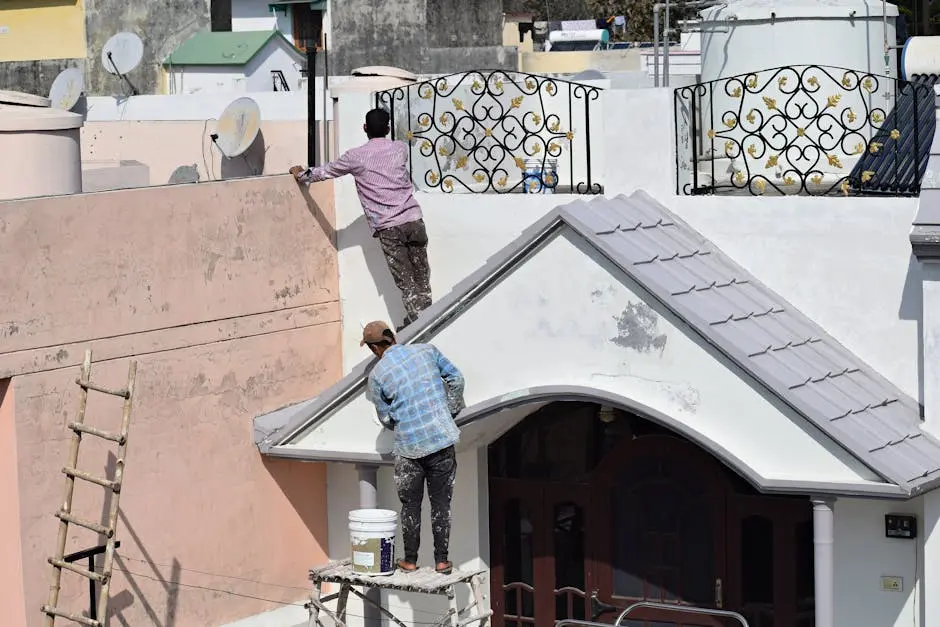
Keeping your roof clean is essential to maintaining the integrity of your home and prolonging its lifespan. But how often should you schedule a roof cleaning? In this blog, we’ll explore the factors influencing roof cleaning frequency and provide practical recommendations to help you keep your roof in top shape.
Why Roof Cleaning is Important
Roof cleaning is not just an aesthetic enhancement; it’s a crucial part of home maintenance. A clean roof helps prevent the growth of moss, algae, and lichen, which can lead to costly damage over time. By investing in regular cleaning, homeowners can prolong the life of their roofing materials.
In addition to preventing damage, a clean roof contributes to the overall appearance of your home. When potential buyers see a well-maintained roof, they feel more confident in the property’s value. A clean roof reflects care and attention to detail, traits that attract buyers and enhance curb appeal.
Moreover, regular roof cleaning can improve energy efficiency. Dirt and debris on your roof can absorb heat, making your home warmer and leading to increased energy bills. Cleaning your roof allows it to reflect sunlight more effectively, contributing to a cooler home during hot months.
Factors Influencing Roof Cleaning Frequency
Several factors determine how often you should schedule roof cleaning. Firstly, the climate in your area plays a significant role. If you live in a humid environment, you’re more likely to experience issues with mold and algae, necessitating more frequent cleanings.
Another factor is the surrounding environment. Homes in wooded areas often accumulate leaves and debris more quickly, which can lead to faster deterioration of roofing materials. Thus, homeowners in such locations should consider a more regular cleaning schedule.
Lastly, the type of roofing material impacts cleaning frequency. Asphalt shingles might tolerate less frequent cleaning compared to metal roofs, which can be more prone to rust and deterioration if not properly maintained. Understanding your roof type is crucial in determining the cleaning intervals.
Recommended Cleaning Schedule
Generally, it’s advised to schedule roof cleaning at least once a year. However, this frequency may vary based on the factors mentioned earlier. For instance, if you live in a high-moss area, biannual cleanings might be more appropriate.
In addition, after severe weather events, it’s wise to inspect your roof and consider a cleaning. Winds can blow debris onto your roof, and heavy rains can promote mold growth. Keeping an eye on your roof’s condition will help you determine the best times for cleaning.
Lastly, if you notice any signs of wear, don’t hesitate to schedule a cleaning. Ignoring these signs could lead to more significant problems down the line, ultimately causing higher repair costs. A proactive approach ensures your roof remains in excellent shape for years.
Signs Your Roof Needs Cleaning
It’s essential to recognize when your roof needs cleaning. One of the first signs is visible stains and discoloration. These blemishes often indicate the presence of algae, moss, or lichen, which can hold moisture and cause severe damage.
Another common sign is the presence of granules in your gutters. If you notice small, sand-like particles collecting in your gutters, it may mean your shingles are deteriorating due to a lack of maintenance.
Additionally, check for any growths on your roof. If you see green patches or any other unusual growths, it’s a clear indication that your roof requires immediate attention. Timely cleaning can save you from more extensive repairs.
Professional vs. DIY Roof Cleaning
When considering roof cleaning, homeowners often face the choice between hiring professionals and doing it themselves. Professional roof cleaning services bring expertise and specialized equipment that can give your roof a deep clean without risking damage.
However, DIY cleaning can be an option if you have the right tools and experience. Just remember that safety should be your priority. If you’re not comfortable climbing on your roof or handling cleaning solutions, it’s better to hire a professional.
Ultimately, the best approach depends on your comfort level and the extent of the cleaning required. For minor tasks, a DIY approach could work well, but for heavy duty cleaning, especially if mold or moss is a concern, professionals are likely the safer choice.
Final Thoughts on Roof Cleaning Frequency
Regular roof cleaning can safeguard your home from damage and enhance its curb appeal. By understanding the ideal schedule for your specific circumstances, you’ll be able to enjoy the benefits of a clean roof for years to come.


Leave A Comment